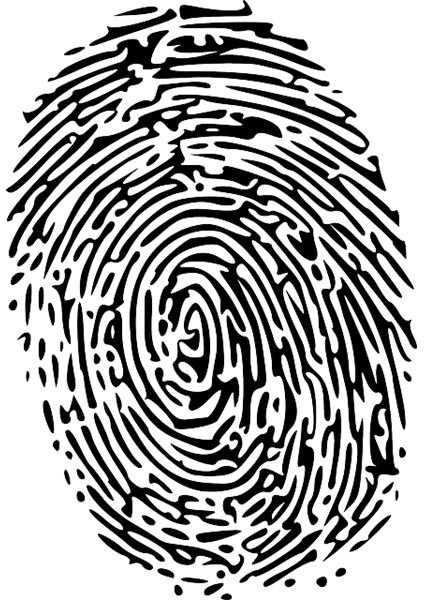How Do Fingerprints Work? Homework Help
Blood, Sweat and DNA
Take a magnifying glass and look at your fingertip up close. What you see is called friction ridges. These ridges on the skin help us to pick up things and the grooves give us a good grip for manipulating an object, as well. The pores within your skin and along the fingerprint ridges are openings for ducts leading from sweat glands and billions of microscopic sweat channels.
Bodily fluids, such as water, body oils and dissolved solids are secreted onto fingers, providing an outline of the ridge pattern. Sweat is about 98.5 percent water and the other 1.5 percent is composed of salt, amino acids, proteins and other chemicals, which stick to fingertips and fingers.
Uniquely You
When your finger touches anything, it deposits the sweat and oils on a surface but also lays down dirt, food and other substances that are transferred to the object, leaving a print. Prints put down in this manner are invisible and commonly called latents. Even clean hands have enough oil to transmit faint prints. Your hand, palms and feet will also create prints. The patterns are what make your fingerprints unique and identifiable.
A person can change the way they look by cutting and dyeing their hair, losing weight or having plastic surgery, but their fingerprints will always be the same. Although they get larger as you grow from a baby to an adult, the unique pattern never changes.
Print Posse
Ever since the T’ang Dynasty of China more than three thousand years ago, people have been using fingerprints for identification. T’ang officials required thumbprints on official divorce documents and for sealing business contracts.
The first systematic use of fingerprints for identification in the United States was adopted by the New York Civil Service Commission in 1901.
Twin Prints
One question about fingerprints that is always asked is: Do twins have the same fingerprints? Even though they share the same DNA—the building blocks of life—their fingerprints will be different and unique.
You can take your own print to see it for yourself quite easily. Press one finger onto an inkpad. Be careful not to get it too wet. Have a friend or parent hold your finger and starting on one side roll it to the other side gently and onto a clean piece of paper. Repeat on all fingers for a complete set. Label which fingerprint is which as you go along.
Can’t find an inkpad? Rub a pencil back and forth onto paper and create a build-up of graphite. Press your finger into the pencil dust and a friend can take transparent tape to pick up each dusted finger. Transfer the tape to a clean white card and label.
Types of Prints
Now that you have a set of prints, you will see the beginning of a larger puzzle. Upon examination, each finger will have a set of patterns. There are three main fingerprint types: arches, loops and whorls. These are also subdivided into other characteristics called plain and tented arches, radial loops, ulnar looks, plain whorls, double loop whorls, and more. There are about 150 ridge characteristics on the average print.
New Evidence
For criminal purposes and physical evidence, fingerprints are referred to as physical evidence or hard evidence. Dactyloscopy, (pronounced dak-tuh-los-kuh-pee) the scientific study of fingerprints arose in response to law enforcement’s need to identify convicts.
Canadian scientists have recently developed a way to extract DNA from fingerprints to product a genetic identity. It was attempted in the past, but the technique for extraction was costly and laborious.
This new method consistently yields 10 billionth of a gram of DNA from a single fingerprint, according to research scientist Maria Viaznikova of the Ottawa University Heart Institute in Canada. While that doesn’t sound like a lot, it is enough for DNA identification.
As this new technique advances, new laws and limits for personal privacy will be needed as many people want their uniqueness to not be used for public purposes.
References
- Visual of Fingerprint Patterns
- From Egypt to Babylon and Beyond: Uncovering Ancient Fingerprints
- DNA from Fingerprints
- Campbell, Andrea. Detective Notebook: Crime Scene Science. New York: Sterling Publishing, 2005.
- Campbell, Andrea. Forensic Science: Evidence, Clues and Investigation. Philadelphia: Chelsea House Publishers, 2000.
- List of Bodily Fluids
